This article was medically reviewed by Cristian Macau, DDS. Dr. Macau is an oral surgeon, periodontist, and aesthetician at Favero Dental Clinic in London. He received his DDS from Carol Davila University of Medicine in 2015.
There are 20 references cited in this article, which can be found at the bottom of the page.
This article has been viewed 195,515 times.
Whether you're a kid, teenager or adult, there may come a time when you find you need to get braces. While the end result of braces will be a beautiful, healthy smile, and teeth that are aligned properly, getting to that point may not be overly fun. While braces are a fairly common occurrence, even among adults, it doesn’t mean those who wear braces want them to be obvious and noticeable.
Steps
Choosing Less Noticeable Braces
-
1Learn how standard braces work. “Standard” braces include many different parts, which, except for the elastics, are all made of metal. The various parts of standard braces are as follows:[1]
- Bands - rings of metal that go around a molar at each end of your teeth reaching a total of four.
- Brackets - small, square metal pieces that attach to each tooth after an entire series of measurements where even half of a millimeter can make a big difference.
- Wire (round and square) - a thin, flexible wire that is attached to the bands and brackets and can be adjusted, which is the most important part that helps you to get straight teeth.
- Elastics (also called ligatures) - tiny elastics are used to attach and hold the wire to the brackets and bands. However, in some cases your orthodontist may use metal ligatures.
- The bands and brackets are glued to your teeth and stay in one position while you have braces. The wire and elastics are changed usually every time you go to the orthodontist for an adjustment.
-
2Ask your orthodontist about ceramic braces. Ceramic braces are generally the same as “standard” braces, except the brackets are made of ceramic instead of metal. Ceramic brackets are usually white or clear-ish in colour and blend into the colour of your teeth so they aren’t as noticeable, which would make the wire the only visible component of your braces. In general the brackets are designed so they do not stain, and stay the same colour for the period you wear them. Like “standard” brackets, elastics are still required to attach the wire to the brackets, but you can choose to use white or clear coloured elastics. The wire, however, is still the same metal as “standard” braces.[2]
- It has been reported that the clear or white coloured elastics can stain over time, making them stand out more than the brackets. But keep in mind that these are changed every time you get an adjustment, which usually happens once a month so even if you smoke they will not be that visible.
- Ceramic braces are more expensive than “standard” braces and may not be covered by some dental plans.
Advertisement -
3Inquire about Invisalign braces. Invisalign braces are clear plastics moulds of your teeth, similar in a way to mouthguards, but not as bulky. When they’re on your teeth, they are essentially invisible. They also do not require any items to be glued to your teeth, and you won’t need to use wires and elastics. You will just have to remove them when you eat and brush your teeth and then apply them again. Invisalign braces are only made by one company, but most Orthodontists do offer them. (There is a new type available that some orthodontists offer. These need to be changed monthly or even more often. They widen and fall off when the effect is complete.) Only people who have minor issues will be able to use Invisalign, as they are not designed for severe orthodontic problems. Your orthodontist will be able to tell you if your particular situation “qualifies” for Invisalign braces.[3]
- Invisalign braces are quite a bit more expensive than “standard” braces and may not be covered by some dental plans.
-
4Find out more about lingual braces. Lingual braces consist of the same components as “standard” braces, except the brackets are glued to the back of your teeth, instead of the front. Therefore, it’s almost impossible for anyone to see your braces when you’re smiling or talking. Only some orthodontists are trained on how to use lingual braces, so if you are interested in this option, you’ll have to find an orthodontist who offers them.[4]
- Lingual braces are similar to Invisalign in terms of function because they are not applicable in more complicated cases, and the treatment usually lasts longer than standard braces.
-
5Ask your orthodontist about self-ligating braces. “Standard” braces require an elastic, or ligature, to hold the wire onto the bracket. Self-ligating brackets do not require an elastic. They’re designed in such a way that the bracket is able to securely hold the wire without help. Most self-ligating brackets are smaller than “standard” brackets and therefore do not stand out on your teeth as much. There is also a kind of self-ligating bracket that is partially made of ceramic, to also hide its appearance better.[5] You will need to check with your orthodontist to find out if they offer self-ligating brackets, and if so, which kinds.
-
6Research Viazis or “FastBraces”. Viazis braces are a little different than “standard” braces, but are made completely of metal. Brackets for Viazis braces are the shape of a triangle, instead of a square, and use only a round wire. The concept was developed by an orthodontist in Texas, and is supposed to cause the patient less discomfort and speed-up the brace-wearing process. The triangle shape of the bracket may appear smaller on your teeth, helping to make the braces stand out less than square brackets. Not all orthodontists use this method, so you would have to research potential orthodontists beforehand.[6]
-
7Turn your braces into a fashion statement. You may not be happy with the fact that you have to get braces, but rather than thinking of ways to hide your braces, show them off! An orthodontist in Nebraska makes brackets that are shaped like stars, flowers, hearts, footballs, and more. They work the same way as a standard bracket, but they look much cooler. You could even combine interesting colours of elastics with the shape of your braces to make a statement.[7] [8]
Keeping Your Mouth Beautiful
-
1Rinse your mouth at least three times a day. You don’t have to use mouthwash, unless you have it available, just water. Rinsing your teeth, at a minimum, will help dislodge any food particles that may be caught in your braces. To help you remember to do this, start a routine of rinsing your mouth every time you eat. This is important not just for looks, but also for preventing gum bleeding, which is hard to control during an orthodontic treatment.
-
2Brush your teeth at least twice a day. Braces provide a lot of little spots where food particles can get caught. If food gets stuck in these areas for too long, it can degrade your teeth, increasing the chances of decay and cavities. Ideally you should bring a toothbrush and toothpaste with you to school, work, or anywhere else you go and try to brush your teeth after every meal.[9]
- When you have braces it is recommended you use a soft-bristled toothbrush, whether it’s a manual or electric toothbrush.
- Get a new toothbrush every three months or change it when bristles start to spread.[10]
-
3Floss every day. Flossing helps remove food particles and plaque that can build up under the gum line, where your toothbrush may not reach. Removing these particles every day helps ensure your gums stay healthy while you’re wearing your braces.[11]
- There are two types of floss you may use: one is the regular kind and the other type has a thicker end for flossing under dental bridges and will work perfectly between brackets. You can also get floss that is pre-threaded on a holder if you prefer.
- In addition to flossing, you may want to consider an oral irrigation system. (You might be more familiar with the brand name of WaterPik.) These systems can spray jets of water into your mouth to reach spots you can’t get to with a toothbrush or floss.
- Since flossing is easier without the wires, ask your orthodontist if you (or them) can floss when you’re at their office for an adjustment.[12]
-
4Get a regular dental cleaning every six months. Keeping your teeth and gums healthy on your own is an awesome first step, but try to visit your dentist for a cleaning every six months. Not only will your dentist be able to do a more thorough cleaning of your teeth and gums, they’ll be able to show you areas you may need to pay extra attention to.
-
5Avoid eating certain types of foods. When you have braces you do need to pay more attention to the types of foods you eat. One reason is that really hard foods can actually break the brackets of your braces. You should try to avoid foods such as caramel, liquorice, lollipops, gum, popcorn, taffy, nuts, and jelly beans because they will turn into a constant deposit for bacteria and transform the sugar into acids. Other types of foods, like apples and carrots, are still okay to eat, but should be cut up first and not eaten whole.[13]
- Ceramic brackets are designed not to stain, but clear and white elastics can. If you’re wearing clear or white elastics, you may want to stay away from foods like coffee, red wine, purple and red coloured sodas, curry (specifically the spices turmeric and curry powder), mustard, and pasta sauce.
- Keep in mind that your ligatures only stay on your braces for a short period of time, and then they’re changed. So you might want to eat foods that may stain them closer to your orthodontic appointment!
-
6Wear a mouth guard when playing sports. If you do any active sport, including things like skateboarding or snowboarding, you should consider wearing a mouth guard. Mouth guards help protect your teeth from being broken or even knocked completely out.[14] It’s even more important when you wear braces, as in addition to your teeth, you want to avoid breaking the various parts of your braces or injure your oral mucosa, which is very sensitive when in contact with the metal parts of your braces.
-
7Do not smoke. Smoking can cause a lot of oral problems, whether you have braces or not. Besides bad breath, smoking can stain your teeth and tongue, dull your sense of taste and smell, cause you to heal slower after oral surgery, cause gum disease and tooth loss, and cause oral cancer. If you smoked before getting braces, this would be a great time to focus on quitting.[15]
-
8Avoid oral piercings. Any type of piercing inside or around your mouth can cause long-term problems. Oral piercings can cause infections and swelling inside your mouth, can cause you to choke if something were to break, or can crack a tooth if you bite too hard.<[16] The combination of oral piercings and braces is, quite frankly, a recipe for disaster that does a lot of harm to your teeth and can cause accidents during sleeping. If you have any oral piercings before getting braces, you will need to speak to your orthodontist about them. Chances are they’ll ask you to remove them before starting your orthodontic treatment.
Taking Attention Away from Your Braces
-
1Use creative or bold eye makeup. One potential way to draw attention away from your mouth, and towards another facial feature, is to make that other facial feature really stand out. One way to do this is with really creative eye makeup, or really bold coloured eye makeup.[17]
-
2Wear awesome earrings. Draw everyone’s attention away from your mouth by wearing really awesome earrings. Wear earrings that are large, or colourful, or really stand out with your hair style.[18] People will be too busy admiring your earrings to even notice you have braces.
-
3Get a haircut that will take attention away from your mouth. Certain hair styles naturally draw the eye away from certain facial features - like your mouth - and the attention somewhere else. Speak to your hair stylist about what styles will work best for you. Also consider getting your hair dyed a really awesome fashion colour. Not only are these colours extremely popular today for almost any age, but they’re sure to have someone looking at your hair and not your mouth.[19]
-
4Consider growing a beard. This is obviously not going to work for everyone, but it certain is an option for some. Beards, in general, are quite popular right now and a lot more men have grown theirs out. And depending on the beard you grow, it can make you look more distinguished and mature. And if you go for the lumberjack look, pretty much anything below your nose is hidden by hair, including your braces![20]
-
5Take care of your lips. Eating, drinking, talking, environmental conditions, and other things can cause your lips to dry out and become chapped. Chapped lips tend to stand out on a person. If you have braces, you want to make sure you keep your lips healthy and moisturized into order to draw attention away from your mouth. Try carrying a good quality lip balm in your pocket or bag and applying it regularly. If possible, make sure the lip balm includes sunscreen.[21]
-
6Practice smiling with your braces. If you’re self-conscious about your braces standing out when you smile, practice in the mirror.[22] This may be even more important if you are going to have your photo taken for something like a wedding, graduation, etc. There are also smile exercises you can do to help train and build the facial muscles you use to smile.
- Check out the article How to Smile with Braces for more great tips!
-
7Work to reduce your self-consciousness about your braces. There is absolutely nothing about your braces that is shameful. You may feel awkward with them, but you have them because you want to improve your teeth and your oral health. In fact, braces have actually become more popular because a perfect smile with perfect teeth has become more popular and people have also realized that beyond the aspect or high cost, braces are really important for your health in the end. Some teens are actually pressured into getting braces, instead of teased about having braces![23]
- Parents - if you’re thinking it’s time for your child to get braces, talk to them about it. Make them part of the decision. Take all their questions seriously, and allow them to ask their orthodontist any and all questions they have. The more comfortable they are that they’re making the right decision for themselves, the more likely they are to accept the whole process.[24]
- Remind yourself that, chances are, not a lot of people even notice you’re wearing braces. Because you’re concerned about your braces, you are probably noticing braces on other people way more than they are noticing the braces on you.[25]
- If you’ve had a bad day, maybe because someone teased you about your braces, or you weren’t able to eat your favourite food because your teeth hurt too much, talk about it. Vent your frustrations to your good friends, siblings, or even your parents. Sometimes simply saying it out loud and having someone listen will make you feel a lot better.[26]
Expert Q&A
-
QuestionHow do I make my braces less noticeable when I'm ugly?
 Cristian Macau, DDSDr. Macau is an oral surgeon, periodontist, and aesthetician at Favero Dental Clinic in London. He received his DDS from Carol Davila University of Medicine in 2015.
Cristian Macau, DDSDr. Macau is an oral surgeon, periodontist, and aesthetician at Favero Dental Clinic in London. He received his DDS from Carol Davila University of Medicine in 2015.
Doctor of Dental Surgery You are not ugly. Being beautiful or ugly is just a matter of interpretation. Make your braces less noticeable using the suggestions in this article or try speaking to your orthodontist about placing invisible ligatures, especially if you have ceramic braces.
You are not ugly. Being beautiful or ugly is just a matter of interpretation. Make your braces less noticeable using the suggestions in this article or try speaking to your orthodontist about placing invisible ligatures, especially if you have ceramic braces. -
QuestionI hate my braces and want them gone. I don't want people in my class to judge me and I don't want to wear clothing that does not match my braces. What do I do?
 Cristian Macau, DDSDr. Macau is an oral surgeon, periodontist, and aesthetician at Favero Dental Clinic in London. He received his DDS from Carol Davila University of Medicine in 2015.
Cristian Macau, DDSDr. Macau is an oral surgeon, periodontist, and aesthetician at Favero Dental Clinic in London. He received his DDS from Carol Davila University of Medicine in 2015.
Doctor of Dental Surgery Making your braces go away is not the best way of dealing with this. They are more and more popular even among adults so why you should worry about other mean kids in your class? Your health is much more important than anything else and you will definitely have regrets later on about not finishing the treatment.
Making your braces go away is not the best way of dealing with this. They are more and more popular even among adults so why you should worry about other mean kids in your class? Your health is much more important than anything else and you will definitely have regrets later on about not finishing the treatment.
References
- ↑ https://orthodonticassoc.com/braces/how-do-braces-work/
- ↑ https://www.ollieanddarsh.co.uk/blog/teeth-straightening/which-is-better-metal-braces-or-ceramic-braces/
- ↑ https://www.belmarorthodontics.com/tips-wearing-braces/
- ↑ http://www.archwired.com/ceramic_vs_metal_braces.htm
- ↑ http://www.archwired.com/ceramic_vs_metal_braces.htm
- ↑ http://www.archwired.com/ceramic_vs_metal_braces.htm
- ↑ http://www.archwired.com/ceramic_vs_metal_braces.htm
- ↑ http://www.ncbi.nlm.nih.gov/pmc/articles/PMC2853826/
- ↑ http://www.mouthhealthy.org/en/Teens/
- ↑ http://kidshealth.org/kid/stay_healthy/body/teeth_care.html?tracking=K_RelatedArticle#
- ↑ http://www.mouthhealthy.org/en/Teens/
- ↑ http://kidshealth.org/kid/feel_better/things/braces.html?tracking=K_RelatedArticle#
- ↑ https://www.dentalassociates.com/dental-topics/foods-avoid-braces
- ↑ http://www.mouthhealthy.org/en/az-topics/m/mouthguards
- ↑ http://www.mouthhealthy.org/en/Teens/concerns/
- ↑ http://www.yourdentistryguide.com/piercing/
- ↑ http://www.oralanswers.com/braces-photos-teenagers/
- ↑ http://www.oralanswers.com/braces-photos-teenagers/
- ↑ http://www.hairfinder.com/hair2/draw-attention-away-from-my-teeth.htm
- ↑ http://www.themanual.com/grooming/how-to-shape-a-beard/
- ↑ http://www.mayoclinic.org/diseases-conditions/dry-skin/expert-answers/chapped-lips/faq-20057819
- ↑ https://www.blueridgeorthodontics.com/11-tips-perfect-picture-smile-with-braces/
- ↑ http://www.theglobeandmail.com/life/parenting/cosmetic-braces-a-teen-trend-with-surprising-bite/article25951156/
- ↑ http://facescapeartistry.com/2015/05/15/helping-your-self-conscious-teenager-through-wearing-braces/
- ↑ http://psychcentral.com/blog/archives/2014/01/26/how-to-be-less-self-conscious/
- ↑ http://facescapeartistry.com/2015/05/15/helping-your-self-conscious-teenager-through-wearing-braces/
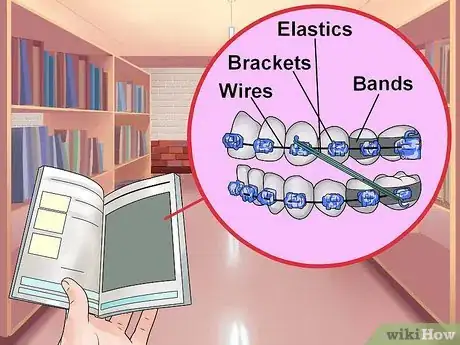

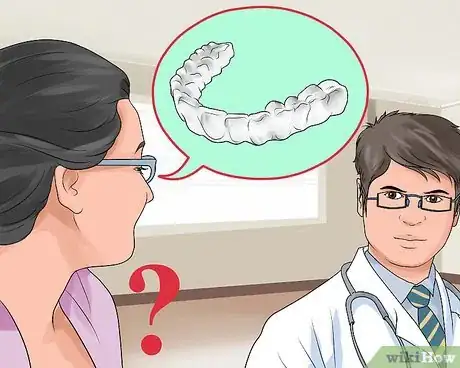

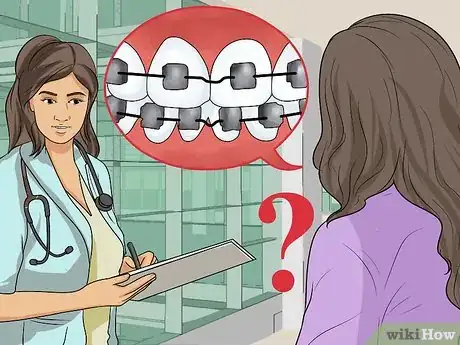
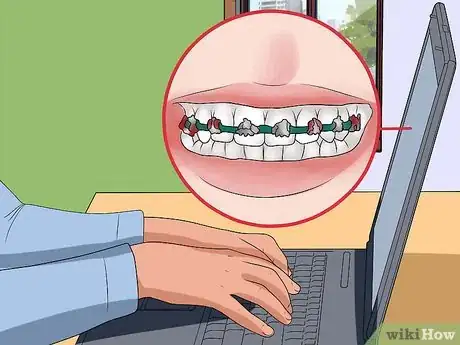
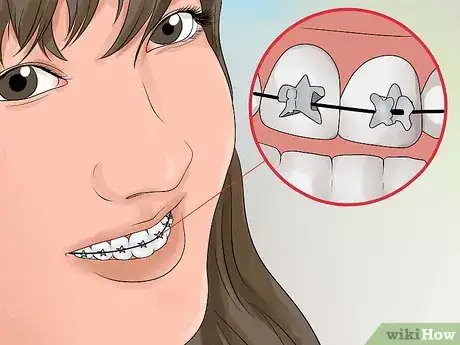
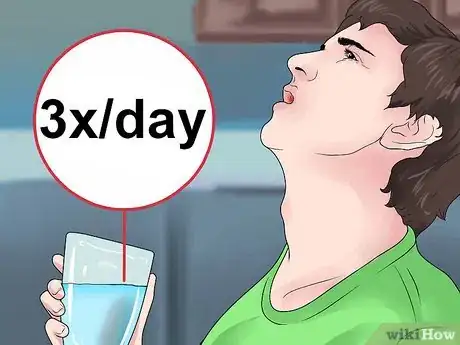

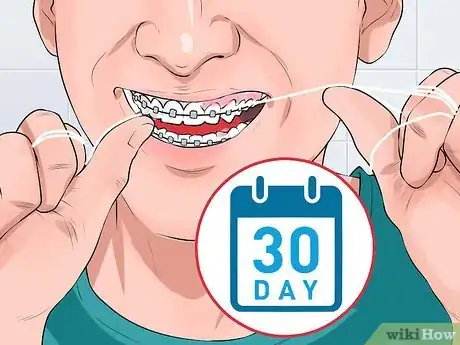

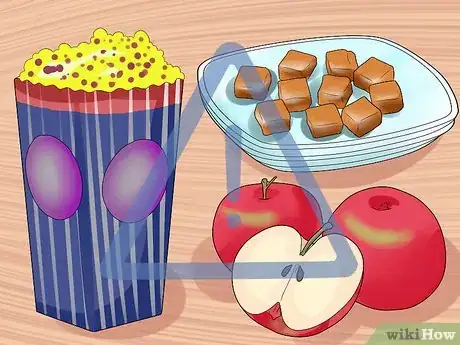
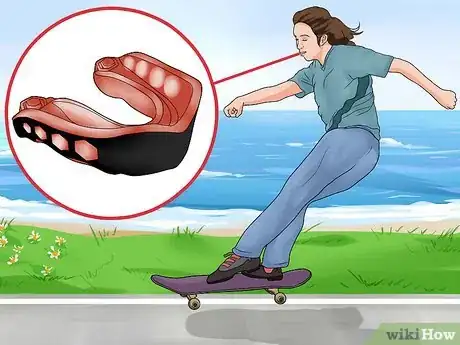
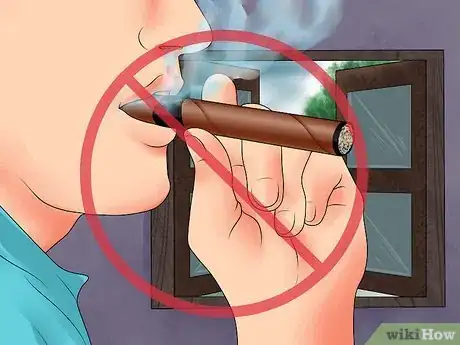
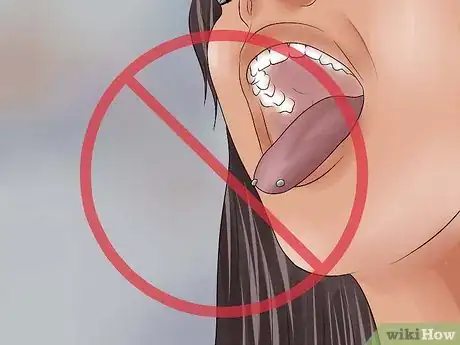
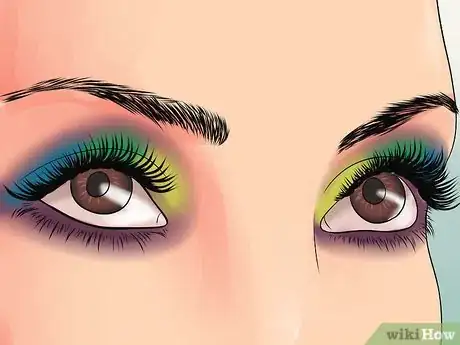
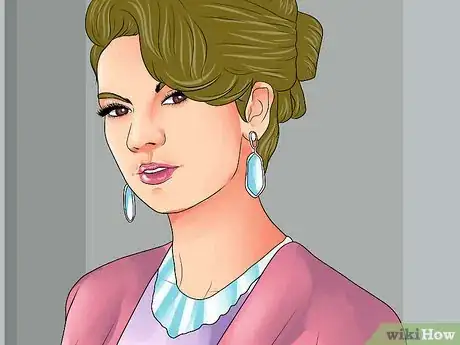
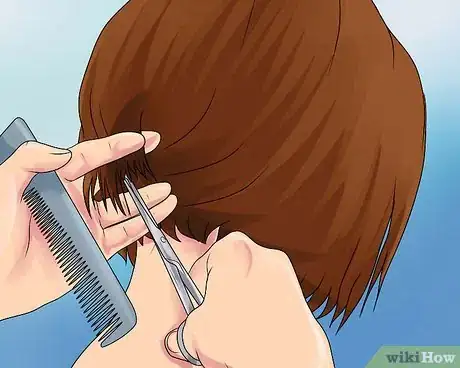
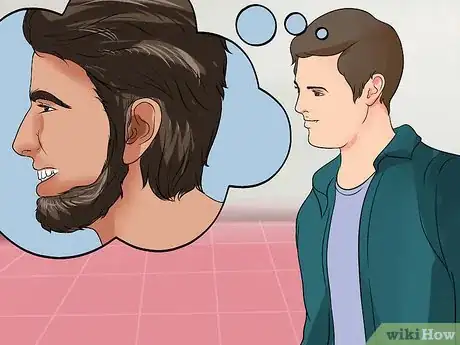
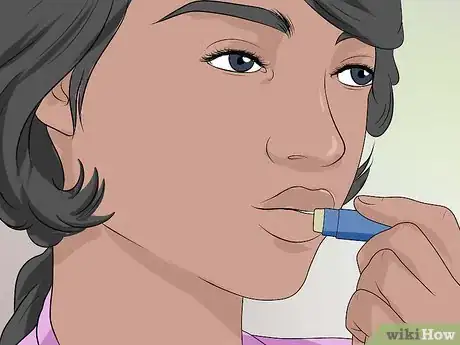
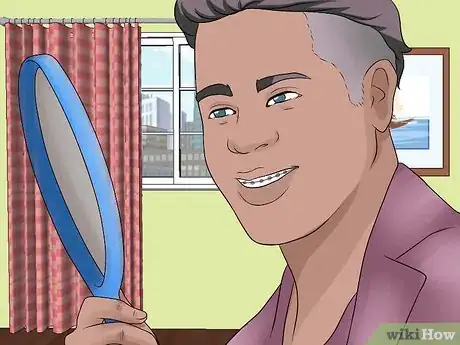
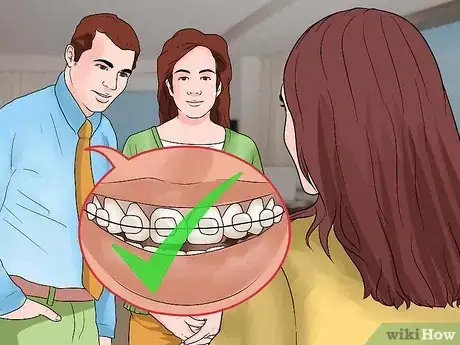
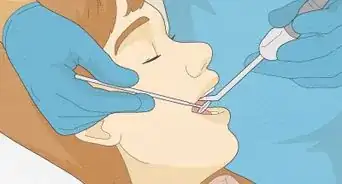
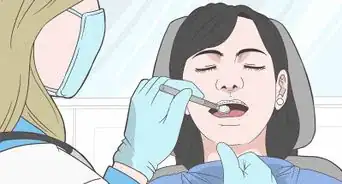
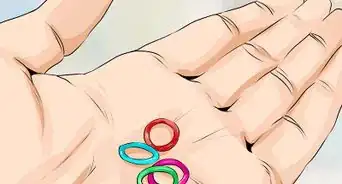

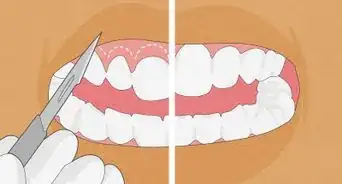

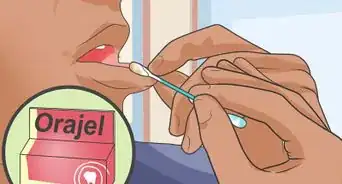

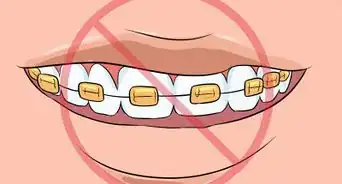
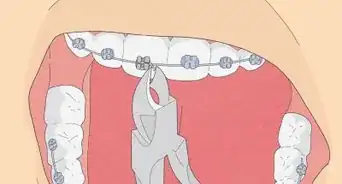
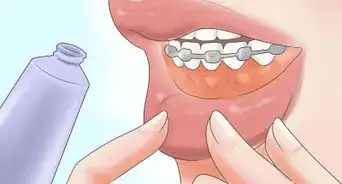
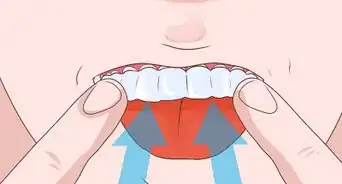
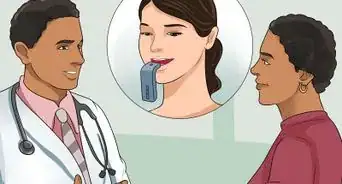










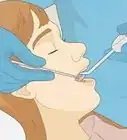
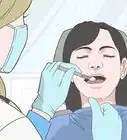
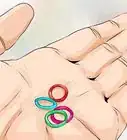
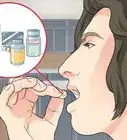



































Medical Disclaimer
The content of this article is not intended to be a substitute for professional medical advice, examination, diagnosis, or treatment. You should always contact your doctor or other qualified healthcare professional before starting, changing, or stopping any kind of health treatment.
Read More...